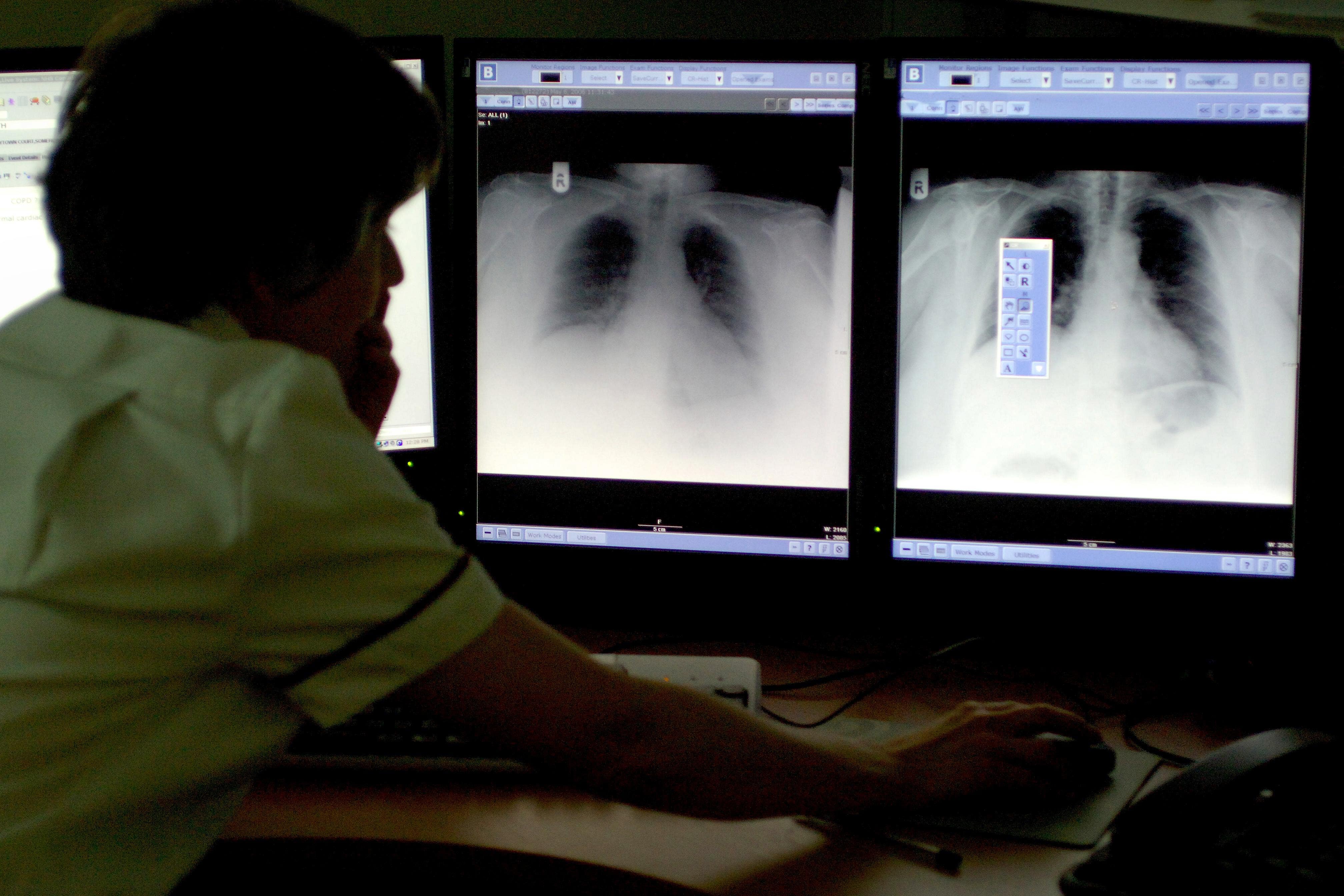AI could solve NHS radiologist ‘workforce crisis’
A study in Surrey found the technology could categorise chest X-rays with an accuracy of 99.7%

Artificial intelligence (AI) could help the NHS overcome a radiologist “workforce crisis”, experts have said, although building trust in the technology is an important step in it becoming a normal part of a modern health service.
It comes after a pilot study in Surrey found AI had the power to categorise normal chest X-rays with a 99.7% accuracy, showing potential to speed up cancer diagnoses.
Technology company Qure AI has developed its platforms to interpret the likes of X-rays, CT scans and ultrasounds to free up clinicians’ time.
Commercial vice president and UK and EU head of commercial Darren Stephens told the PA news agency: “We can’t recruit and onboard radiographers, radiologists and doctors at the same level that we need to meet the demand.
“So we need to think cleverer and we need to do more with the precious resource that we have.”
Qure’s qXR platform is being trialled by Frimley Health NHS Foundation Trust to highlight the benefit of AI when it comes to differentiating between normal and abnormal chest X-rays.
The trust used 576 chest X-rays, with Qure’s AI platform able to identify normal scans with a 99.7% accuracy rate.
We're on a journey right now. This tech we know has huge potential, but it's a matter of building the trust in it, building the correct implementation pathway and then having the appropriate funding
Using the platform could save consultants up to two hours a day, researchers said, by allowing scans to be transferred to radiographers to read.
Dr Amrita Kumar, consultant radiologist and AI clinical lead at Frimley Health NHS Foundation Trust, said: “There’s increasing healthcare demands on the NHS, which has obviously been exacerbated by the pandemic.
“With this demand, a lot of the services require imaging support because the role imaging plays in diagnosis and management is quite pivotal.”
Dr Kumar added that a “workforce crisis” in radiology is also having a “very negative effect” on reporting timelines and causing backlogs in chest X-rays, as well as CT and MRI scanning.
“Chest X-ray is very important because it’s the first step in diagnosing lung cancer. We wanted to see candidates have better turnaround times so that we diagnose the cancers faster, but also create that efficiency and productivity and save some time for our consultants as well.”
She said the pilot with Qure was done to demonstrate how AI “actually translates into the real clinical pathway”.
“We’re on a journey right now. This tech we know has huge potential, but it’s a matter of building the trust in it, building the correct implementation pathway and then having the appropriate funding.”
Elsewhere in the NHS, AI is currently being used to read mammograms and is helping doctors to diagnose strokes faster.
Last month, the National Institute for Health and Care Research (NIHR) published a collection of 10 studies exploring the application of AI in various parts of the health service.
These included detecting heart disease through “smart stethoscopes”, as well as using AI to predict disease progression and personalise cancer care.
Mr Stephens said the UK is “leading the way” in terms of adopting the technology, but more must be done to educate people on its benefits.
“There’s a lot of myths associated with the technology and how it’s deployed because there’s a lot of fear out there around Chat GPT-like applications and language models.
“The version that is released to a hospital after it’s been tested doesn’t change beyond that release. It’s very much done in a safe and controlled way.”
He said the concept of AI “learning as it goes along doesn’t exist in our world”.
“It might with other AI applications in the more general consumer market, but not on the highly regulated medical side of things.”
I think there's a huge responsibility on companies like ourselves, or clinicians operating in this space, from an education and an awareness perspective
Mr Stephens hopes AI will become a normal part of the modern NHS in the coming years, but said continued education is important.
“In a previous life, I was involved in pre-analytical robotics in pathology. There’s a lot of similarities there – a robot that was going to sort blood samples in the lab was completely unheard of.
“Now I would challenge you to find any laboratory in the country that doesn’t have a blood sciences pre-analytical robotic function. (AI) will become part of a modern delivery of service.”
He added: “I think there’s a huge responsibility on companies like ourselves, or clinicians operating in this space, from an education and an awareness perspective.”
Mr Stephens also said training doctors in AI is “crucial” as it is “necessary for the successful implementation” of the technology.
He added: “It’s about trust, because if people aren’t going to trust and have comfort in using it, the technology will not be successful.”
Health Secretary Steve Barclay said using AI will “improve care for patients”.
He added: “It is essential that we continue to make the most of this revolutionary tech, which is why this government is investing a further £21 million for trusts to roll out AI imaging tools like Qure across the NHS.
“This is on top of £123 million through our AI Awards, which Qure benefited from, to develop software to help radiologists prioritise the most urgent CT head scans for review.
“Access to technology like this can also help save staff valuable time, which is a key part of the NHS Long Term Workforce Plan. The plan will also grow the workforce including doubling the number of medical school places by 2031 and increasing training places for allied health professionals, such as radiographers, by a quarter.”
Bookmark popover
Removed from bookmarks